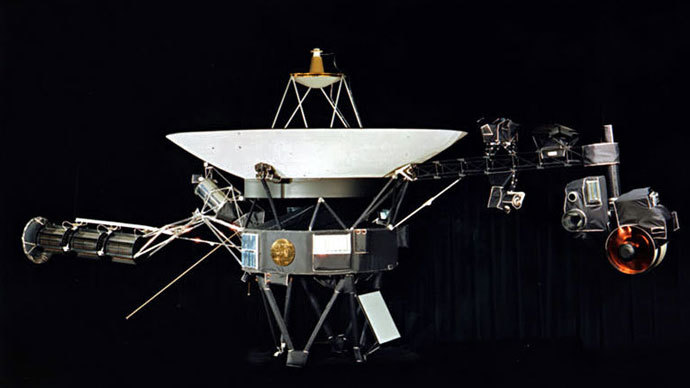Launched in 1977, the NASA Voyager spacecraft recently entered a mysterious zone located between our solar system and the great frontier of space beyond. Physicists are puzzled since their theories didn’t predict anything like it.
As Voyager-1 whizzes through this unchartered frontier, a place
so distant that charged particles from the sun have virtually
disappeared, astronomers are struggling to make sense of the
steady stream of data being returned to Earth.
Astronomers initially believed Voyager-1, which is about 11
billion miles from earth, had reached interstellar space on
August 25, 2012, becoming the first man-made vehicle to breach
the threshold of our solar system. But feedback from the
spacecraft, which showed that the sun’s magnetic field was still
exerting its influence on the probe, quickly cooled that theory.
As it turns out, the craft is still in the sun’s house, so to
speak, standing on the porch with the endless galaxy beyond.
If Voyager-1 had really entered interstellar space, physicists
say, the direction of the magnetic field would be different.
"If you looked at the cosmic ray and energetic particle data
in isolation, you might think Voyager had reached interstellar
space,” said Ed Stone, Voyager project scientist at the
California Institute of Technology in Pasadena, “but the team
feels Voyager-1 has not yet gotten there because we are still
within the domain of the sun's magnetic field."
Stone first explained the discovery of this unexpected zone
during a lecture at the American Geophysical Union last year. A
collection of papers published on Thursday in the journal Science
put the findings into perspective.

In 2004, Voyager-1 reached a highly charged region known as the
heliosphere, a bubble-shaped region surrounding the solar system
where particles move in all directions due to solar winds. It was
anticipated this would be the final leg of the trip before the
spacecraft broke free of our solar system and entered
interstellar space.
"You can never exclude a really peculiar coincidence, but this
was very strong evidence that we're still in the
heliosphere,” Voyager scientist Leonard Burlaga, the lead
author of one of the papers, based at NASA's Goddard Space Flight
Center, told Reuters.
Measuring the size of the heliosphere is also part of the Voyager
mission.
Scientists believe that Voyager-1 journeyed into something of a
magnetic boundary zone, where particles from inside and outside
the solar system interact, but where the gravitational pull of
the sun remains dominant.
"A day made such a difference in this region with the magnetic
field suddenly doubling and becoming extraordinarily smooth,"
said Burlaga, "But since there was no significant change in
the magnetic field direction, we're still observing the field
lines originating at the sun."
NASA has got a lot of mileage out of Voyager-1 and its sister
spacecraft Voyager-2, which were launched 36 years ago to collect
data on Jupiter and Saturn and their respective moons. After
completing their mission, the vehicles were sent hurtling toward
interstellar space for what will certainly be their last mission.
Voyager-1 is heading in the direction of a star known to
astronomers as AC +793888, but it will only get to within two
light-years (one light year equals the distance that light
travels in one year) before its nuclear energy source depletes
itself sometime in the next decade. Voyager-2, meanwhile, is
exiting the solar system from a different direction, and has not
experienced the same phenomena.
"Voyager-2 has seen exactly what the models predicted we would
see, unlike Voyager 1, which didn't," said Stone.
Voyager 1 may be in a unique place where the heliosphere and
interstellar space interconnect, he added.

